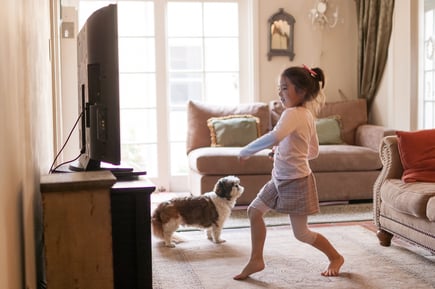 We all know that physical fitness and wellness are prerequisites for a productive and healthy life. Exercise is good not only for the body, but for the mind as well. We want to ensure a future full of great experiences. For one population, our children, participating in physical activity may be becoming more and more challenging, whether it be from lack of interest, lack of support, or lack of funding for programs in their community. One area in which this population excels, however, is technology. Without a doubt, smartphone technology is a part of our current culture and most likely will be for a long time. For some older people, this might be a newer concept. At the moment, though, ensuring the future of physical fitness for the next generation will need to coexist with technology.
We all know that physical fitness and wellness are prerequisites for a productive and healthy life. Exercise is good not only for the body, but for the mind as well. We want to ensure a future full of great experiences. For one population, our children, participating in physical activity may be becoming more and more challenging, whether it be from lack of interest, lack of support, or lack of funding for programs in their community. One area in which this population excels, however, is technology. Without a doubt, smartphone technology is a part of our current culture and most likely will be for a long time. For some older people, this might be a newer concept. At the moment, though, ensuring the future of physical fitness for the next generation will need to coexist with technology.
Can Exercise and Technology Coexist?
Being somewhat skeptical of the coexistence of exercise and technology, I, like some people, associate the latter with inactivity and laziness. In the past, this might have been the case; however, a new generation of technology is now capable of training children to be more active while using technology. This was evident with the evolution of video game technology such as Wii Sports and Microsoft Kinect games.
The next evolution, naturally, moved to smartphones. Nearly every person has a smartphone and spends hours and hours per week staring at their screens. Then apps were developed, and have built a new outlet for fitness that not only utilizes the strengths (technology) but the interests (fun and leisure) that really entice children to exercise without even thinking about it.
Smartphone Technology That Gets People Moving
Here are some examples where smartphone technology is positively impacting people’s lives with exercise (source: Wezift.com).
- Pokémon GO: Users use an interactive app to walk to Pokémon sites. At that point, a virtual battle ensues. Afterward, the user tries to find the next real-world location for the next battle. Sometimes these sites are common areas where likeminded individuals can meet up and battle with friends. It encourages walking, a proven method of burning calories and promoting a healthy lifestyle.
- NFL Play 60: The National Football League’s app, geared toward fighting childhood obesity through activity, specifically 60 minutes per day. NFL players get involved and help inspire the youth to be physically fit.
- Kids Fitness—Daily Yoga: This app is geared toward the benefits of yoga, teaching children 10 basic poses and movements. This free app helps kids understand the foundational concepts of yoga.
Find the Exercise That Keeps You Engaged
Getting involved with exercise can come in many forms. There are thousands of ways to exercise with thousands of plans. The best one, however, depends on you. What will you do to exercise and keep exercising for a lifetime? That, my friends, is the best exercise in the world. Keep your eyes open for new ideas and concepts as the fitness world is ever-changing. At NIFS, we are dedicated to making sure you are connected with our staff through all forms of social media. Connect with a NIFS Health Fitness Professional to get started on your fitness journey today! Until next time, muscleheads rejoice and evolve!
This blog was written by Thomas Livengood, NIFS Health Fitness Instructor and Personal Trainer. To learn more about the NIFS bloggers, click here.


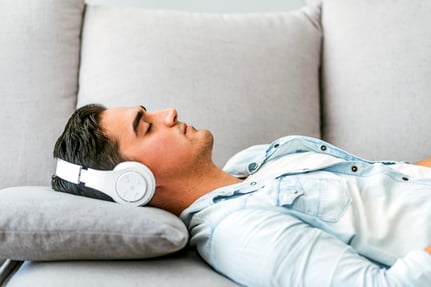 Personal trainers are people, too (well, at least when no one is looking!). In reality, there are a lot of new bridges we, as a society, are crossing every single day. As a trainer, my goal is to put all my effort into making sure that my clients are being healthy with fitness and wellness as a priority. With the lockdown upon us, finding new ways to get this job done is a challenge, but so is making sure that you are finding time for yourself.
Personal trainers are people, too (well, at least when no one is looking!). In reality, there are a lot of new bridges we, as a society, are crossing every single day. As a trainer, my goal is to put all my effort into making sure that my clients are being healthy with fitness and wellness as a priority. With the lockdown upon us, finding new ways to get this job done is a challenge, but so is making sure that you are finding time for yourself. 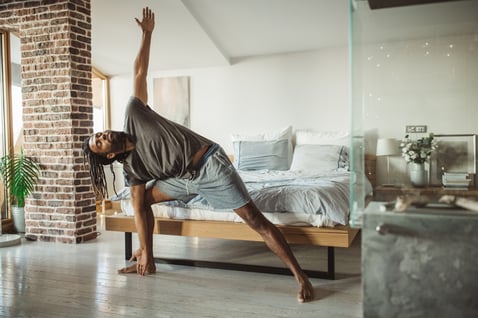 There are no definitive right answers on how we are supposed to individually succeed during a pandemic. We all cope, struggle, and win the day in our own ways. We can all feel a little lost and confused at times, and that’s completely normal as we cross bridges into territory we have never experienced in our lives.
There are no definitive right answers on how we are supposed to individually succeed during a pandemic. We all cope, struggle, and win the day in our own ways. We can all feel a little lost and confused at times, and that’s completely normal as we cross bridges into territory we have never experienced in our lives. 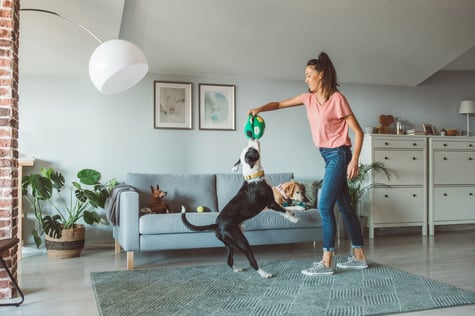 When you hear about fitness and wellness, one of the first things that comes to mind is getting a workout, usually at a gym, fitness center, or club. Some people can get exercise in other ways, such as outdoor activities and sports, while many others receive plenty of fitness at the workplace (think lumberjacks, steel workers, and factory workers). If none of these sounds like you or if you and you feel as though the fitness route is a tough road to travel, there is hope. There are things you do in your everyday life that give you an opportunity to burn calories.
When you hear about fitness and wellness, one of the first things that comes to mind is getting a workout, usually at a gym, fitness center, or club. Some people can get exercise in other ways, such as outdoor activities and sports, while many others receive plenty of fitness at the workplace (think lumberjacks, steel workers, and factory workers). If none of these sounds like you or if you and you feel as though the fitness route is a tough road to travel, there is hope. There are things you do in your everyday life that give you an opportunity to burn calories.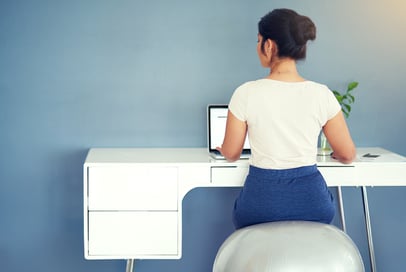 Whether you are sitting, standing, walking, running, or exercising, having good posture plays an immense role in not only how you physically present yourself, but how your body develops over time. Just like most habits, posture has both good and bad sides, each with distinct effects on your body. Focusing on ways to get the most out of your posture can ultimately give you not only a better workout, but also improved health for many years to come.
Whether you are sitting, standing, walking, running, or exercising, having good posture plays an immense role in not only how you physically present yourself, but how your body develops over time. Just like most habits, posture has both good and bad sides, each with distinct effects on your body. Focusing on ways to get the most out of your posture can ultimately give you not only a better workout, but also improved health for many years to come.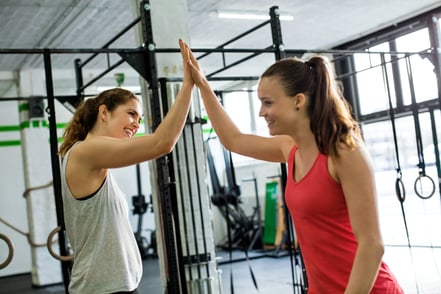 As fitness professionals, we promote good habits to our clients and encourage people to make positive changes in their lives. Sometimes we help others find the spark to exercise or offer the accountability to make those hard-earned results stick. Overall, “helping individuals achieve success in goals and happiness in life” sums up what it means to be a trainer.
As fitness professionals, we promote good habits to our clients and encourage people to make positive changes in their lives. Sometimes we help others find the spark to exercise or offer the accountability to make those hard-earned results stick. Overall, “helping individuals achieve success in goals and happiness in life” sums up what it means to be a trainer.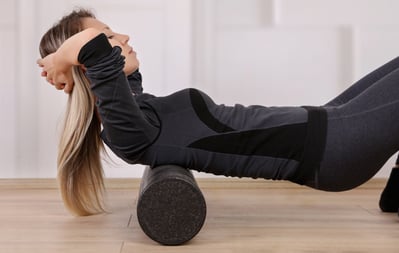 A common nuisance to almost all fitness enthusiasts is the overall lethargic feeling you get from being extremely sore due to a challenging workout. Sometimes this is a deterrent to those looking to develop a consistent workout pattern, and can be especially bothersome if you haven't experienced this phenomenon before.
A common nuisance to almost all fitness enthusiasts is the overall lethargic feeling you get from being extremely sore due to a challenging workout. Sometimes this is a deterrent to those looking to develop a consistent workout pattern, and can be especially bothersome if you haven't experienced this phenomenon before. Holidays are times when you can relax and reflect, spend time with friends and family, and indulge in copious amounts of turkey, ham, mashed potatoes, and pie. Well, maybe don’t eat so much pie. But we do have plenty of reasons to not only be grateful, and to be inspired for the future.
Holidays are times when you can relax and reflect, spend time with friends and family, and indulge in copious amounts of turkey, ham, mashed potatoes, and pie. Well, maybe don’t eat so much pie. But we do have plenty of reasons to not only be grateful, and to be inspired for the future.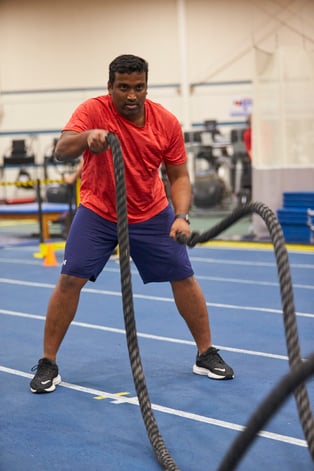 When you begin your fitness quest and are getting started on a new program, finding exercises that are appropriate for you is key to your success. Your fitness staff at NIFS has your back! Training methods and training tools developed from years of research and practice have shown that sometimes a simple exercise done well can be quite effective.
When you begin your fitness quest and are getting started on a new program, finding exercises that are appropriate for you is key to your success. Your fitness staff at NIFS has your back! Training methods and training tools developed from years of research and practice have shown that sometimes a simple exercise done well can be quite effective.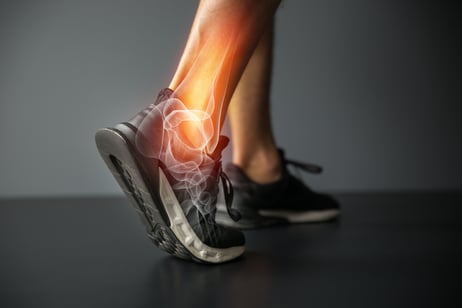 Whether you are a seasoned workout veteran or the new face in the gym, there’s no denying that lower-leg pain can be a huge deterrent for exercise (and day-to-day life, for that matter). Some pains are dictated by the range of motion in the ankle. Due to several factors including previous injuries and wear and tear, physiological problems from the various shoes people wear, and the types of exercises people punish their bodies with, we see individuals every day who have a hard time performing some of the more basic exercises such as squats and deadlifting.
Whether you are a seasoned workout veteran or the new face in the gym, there’s no denying that lower-leg pain can be a huge deterrent for exercise (and day-to-day life, for that matter). Some pains are dictated by the range of motion in the ankle. Due to several factors including previous injuries and wear and tear, physiological problems from the various shoes people wear, and the types of exercises people punish their bodies with, we see individuals every day who have a hard time performing some of the more basic exercises such as squats and deadlifting.